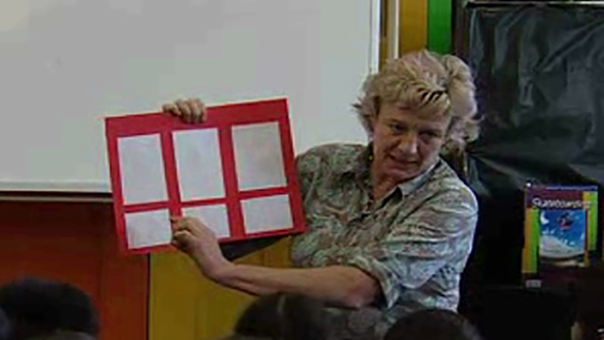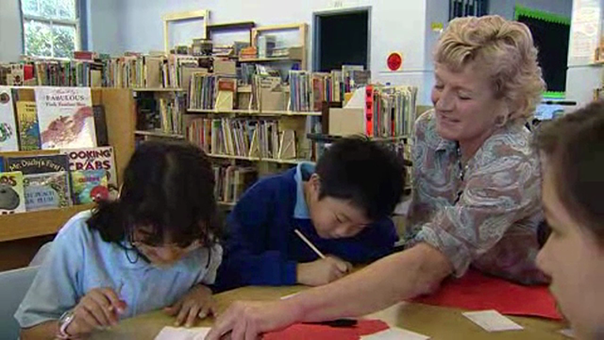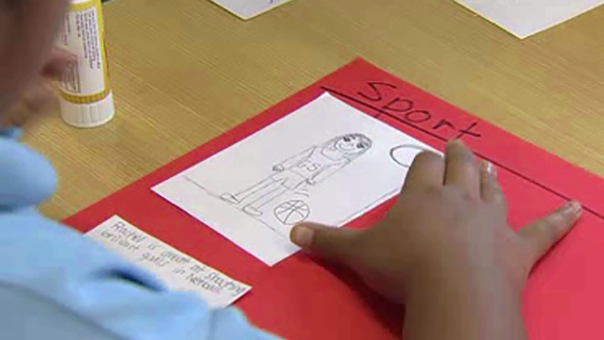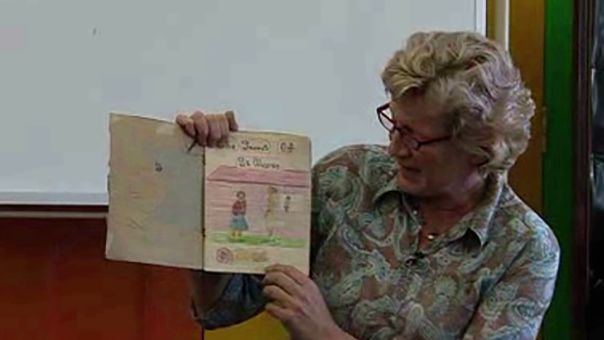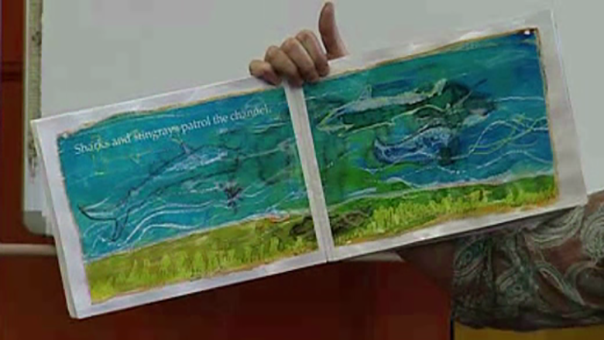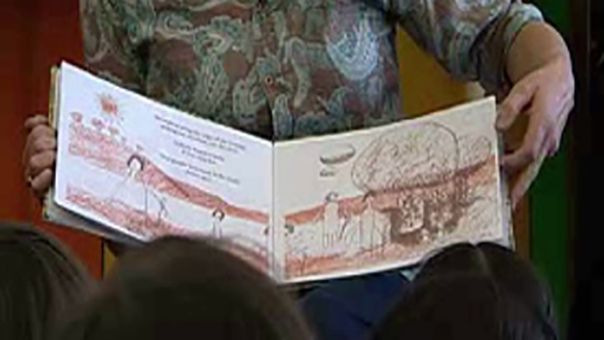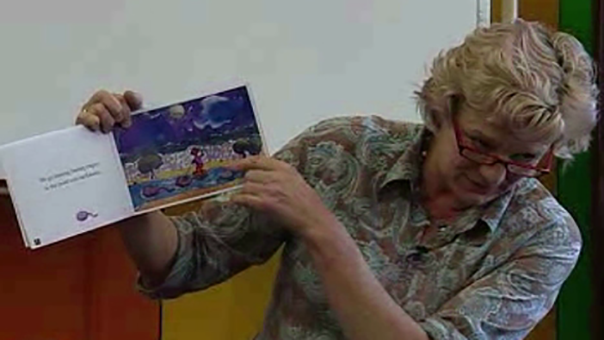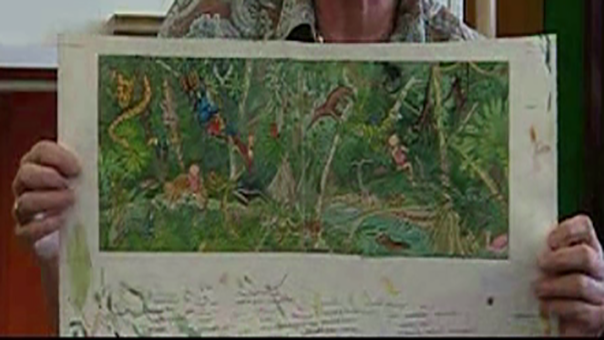11. Making your own book - Characters
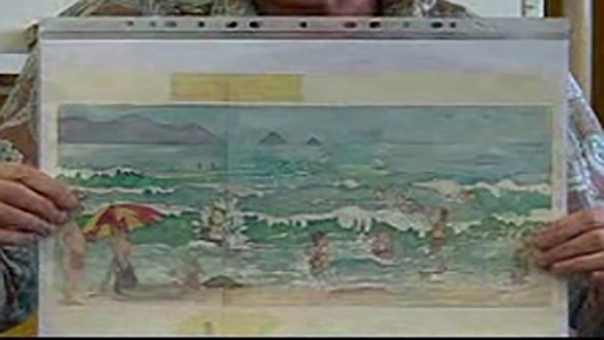
Viewing guide
Teacher to:
-
organise equipment such as cameras, laptops, or art supplies needed for creating a final version of their book
-
revise the drafting process with students and help them focus on the final tasks need for completion of their text.
Students to:
-
explain why an author should know their characters well in a class discussion
-
choose their favourite character from their book and draw them
-
present the character to the class and explain who the character is and why they like them
-
continue to work on their text, starting work on their final version.
Teacher to:
-
guide the class to provide helpful feedback to their peers, perhaps using the ‘Plus, minus and what’s next?’ strategy.
This lesson is designed to help students refine their text by focusing on the characters. Presenting their main character to the class for peer feedback will give them a new perspective and help to focus their writing on ensuring that their characters do not vary from event to event.
Students should be well on the way to their final draft by this stage. This activity could take more than one lesson, but it is useful to set a clear deadline so that students focus on having a completed final version within the deadline.
The done manifesto
This is an excellent time to consider presenting the idea that ‘Done is better than perfect’ to your class. Many students struggle to finish work because they are concerned about being good enough. This fear can lead to anxiety and performance issues in high school. Presenting the argument that finishing something is better than failing to finish because you are concerned about the impossibility of perfection gives students a chance to interrogate their own fears. Bringing this idea into your classroom in conjunction with a focus on drafting and polishing helps students find a balance between improving their work and also accepting a final version as done and being happy with their achievement.
The following articles and resources will help you think about how to present and analyse this idea with your class. Most of them are aimed at adults and will need some adaptation. Taking these ideas, discussing them with your class and having them produce their own version of the manifesto will help them take these ideas on board.
-
Fastcompany article on the ‘Done is better’ theory
-
Pick the Brain article giving ’10 reasons why done is better than perfect’
-
Thunderhead works article ‘Done is better than perfect’
Learning intention
Completing this activity affords students the opportunity to:
-
compose, edit and present well-structured and coherent texts (EN3-2A)
-
think imaginatively, creatively, interpretively and critically about information and ideas and identifies connections between texts when responding to and composing texts (EN3-7C)
-
recognise, reflect on and assess their strengths as a learner (EN3-9E)
-
optional - make artworks for different audiences, assembling materials in a variety of ways (VAS3.2)
-
optional - Learning across the curriculum: Information and communication technology capability.
Alison Lester: Before I did 'Are we there yet?' this was my most popular book in Australia by far. 'Imagine' has been the most popular international one - it's been translated into about ten different languages. This has never been translated but this is a popular Australian one. And once again this was my editor saying, she came to stay with me at the beach that I always go to and said, 'Why don't you do a book about this beach?' So I came up with the idea of 'Magic Beach'. And I'll show you some of the rough drawings for that. Here I am just practising drawing the kids so I knew what they look like. You have to know your characters very well or they might look a bit older on one page than the next page. Here's a rough drawing of that first picture of them playing in the sea and then the photocopy of it. I did a really stupid thing, though, I actually have these marks on my page to make sure I don't put anything important because that's where the fold of the book is and I put that little boy's face right in the fold of the book which I was very cross about. I hate making mistakes like that. And there's a colour rough, too, where I was just seeing what the colours would look like when I put it together. When I did this picture I thought it was fantastic and when I showed it to my editor she said 'That's disgusting, Alison, there's no way you're putting that in this book' and I went 'Oh, what's wrong with it?' and I didn't think it was too bad at the time, but when she pointed it out to me I realised that it was kind of too big for the book, like, that's the picture that I ended up using. So this is an imaginary page where the kids are imagining that the waves are white horses and it just like kids riding white horses, whereas this one where the waves and the horses are much more part of each other, seemed to work better and also to have it as a circle so it was like a little slice of your imagination, made it a better picture, I think. Do you think that's true? Yeah, I think it is. So sometimes even though you've done a picture that you think is fantastic, you just have to chuck it away and try again.


